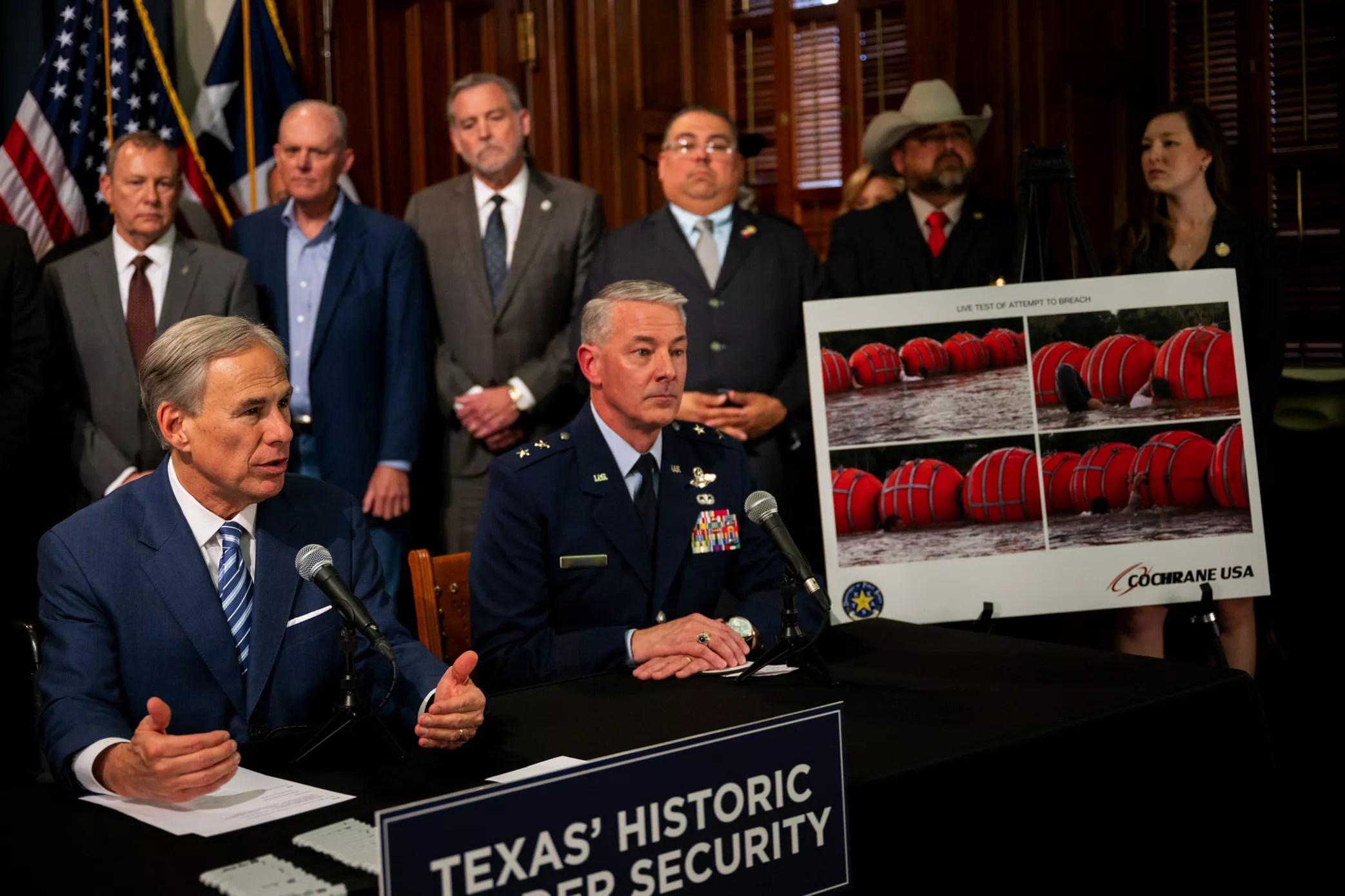
Brandon Bell/Getty Images

Audio By Carbonatix
Floating a Texas river is a timeless summer rite of passage. Situating yourself in the middle of an inner tube and meandering along the Comal or Guadalupe rivers, even when crowded, is pretty close to being in heaven as far as we’re concerned. We don’t know if Gov. Greg Abbott has ever experienced the sun-kissed bliss of floating the Frio, but on Thursday he announced plans that suggests he has a different idea of what “floating the river” means.
During a Capitol ceremony where the governor signed six bills addressing various aspects of border security – a favorite issue of his – Abbott unveiled plans for a new, unusual method for keeping people from crossing the Rio Grande into Texas.
Buoys.
In what read more like headlines from The Onion or McSweeney’s, many media outlets, understandably, couldn’t get the word out on Abbott’s new plan quickly enough. Catchy phrases including “deploy buoys,” “inflatable barrier,” and “buoy barrier” dotted headlines across the country from the Texas Tribune, CBS News and the New York Post.
When news happens, Dallas Observer is there —
Your support strengthens our coverage.
We’re aiming to raise $30,000 by December 31, so we can continue covering what matters most to you. If the Dallas Observer matters to you, please take action and contribute today, so when news happens, our reporters can be there.
The image of Abbott seated next to Maj. Gen.Thomas Suelzer, head of Texas Military Department, with large color renderings of a string of giant, orange globe-shaped buoys propped up on an easel next to them looked more like a shot of a bad Saturday Night Live sketch rehearsal than it did anything official. Also included the artwork, an image of a person struggling to get past the buoys. Not that any of this is terribly funny.
“This strategy will proactively prevent illegal crossings between ports of entry by making it more difficult to cross the Rio Grande and reach the Texas side of the southern border,” noted a press release summarizing Thursday’s signing ceremony and buoy announcement. “The first 1,000 feet of the marine floating barrier will be deployed near Eagle Pass.”
The Rio Grande, with its treacherous currents, has long been a deadly barrier to migrants attempting to ford or swim across it. Last September, nine people drowned after being swept away while attempt to cross the river near Eagle Pass. Drownings on the river are almost daily occurrences, Manuel Mello, the Eagle Pass fire chief, told The Guardian newspaper.
Proud to sign a sweeping package of border security bills into law this afternoon.
— Greg Abbott (@GregAbbott_TX) June 8, 2023
Texas will continue to hold the line against Biden's border crisis.
I also announced the deployment of new marine floating barriers to deter illegal crossings at hotspots along the Rio Grande. pic.twitter.com/C7JlNgXk6M
This latest, aquatic-themed attempt at a border solution comes after Abbott’s Operation Lone Star has racked up billions of dollars in spending, including more than $1 billion for a border wall that was less than two miles long in January of this year. In the months leading up to the 2022 elections, Abbott and Texas Lt. Gov. Dan Patrick, both officials who had been in their positions for multiple terms, ran ads describing how dangerous the border had become, albeit under their respective watches.
During Thursday’s ceremony Abbott declared he was signing bills into law that will provide $5.1 billion more towards the state’s border security efforts. Bills allowing unmanned aircraft to be used by state military for observing the border (Senate Bill 423) and expanding the powers of the U.S. Border Patrol (Senate Bill 602) are set to become law.
And buoys, too.